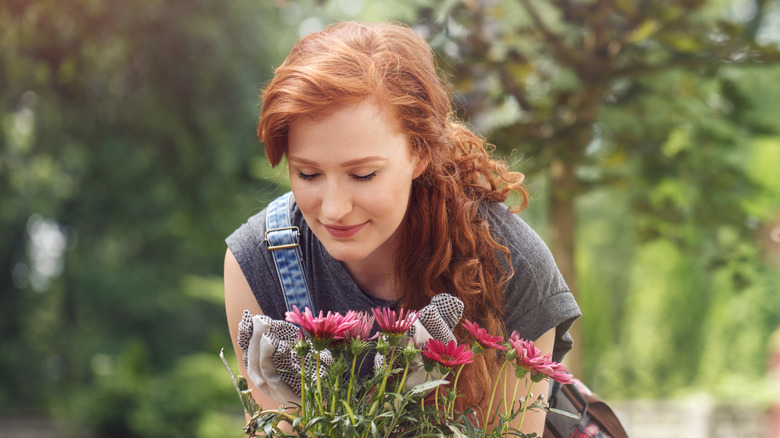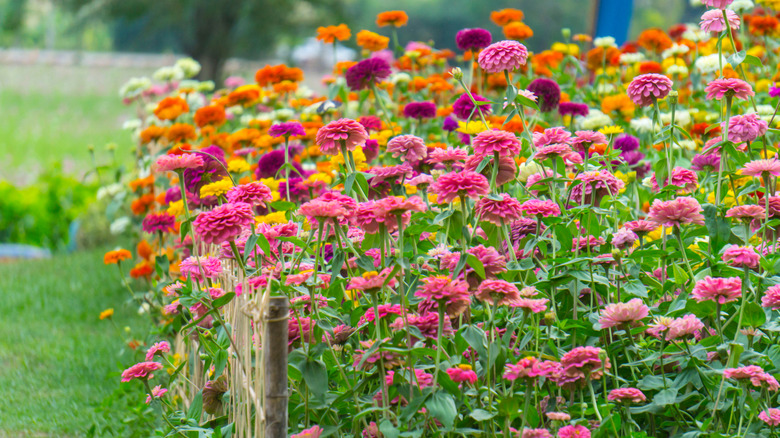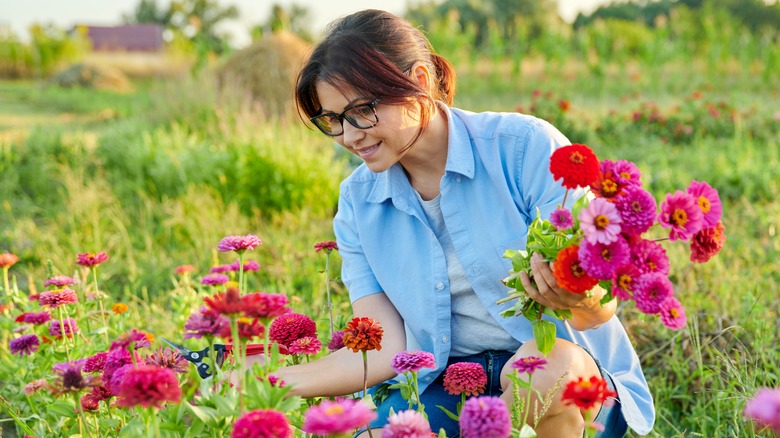This Colorful Flower Is A Must For Beginner Gardeners, According To Pinterest
If you have been thinking of expanding your gardening skills by growing flowers, there are plenty to choose from. However, you don't want to pick a type that will leave you doubting what you know. Some plants may look pretty but aren't very easy to grow. If you want a species that looks beautiful and will bring a splash of color to your garden but is approved for a beginner gardener level, Pinterest recommends growing one flower in particular — zinnias.
Zinnias don't need any extra nudging to flourish, and won't discourage your gardening journey due to how simple they are to maintain. They also sprout quickly, so you won't have to plan anything in advance to achieve the perfect garden bloom. Depending on the variety you buy (21 in total), zinnias will come out in different colors. Whether it's red, orange, pink, or yellow you're looking for, this statement bloom is guaranteed to bring a colorful accent to your yard. If you want to grow and care for your own zinnias from scratch, here's exactly what you need to do.
Grow zinnias with ease by following the below tips
To get started growing your zinnias, you'll need a reasonably sized garden bed. You can begin growing zinnias indoors, but we recommend doing everything outside. The flower species is prone to transplant shock and may not survive being moved (the exception to this is if you move the zinnias when they are young to reduce the risk of transplant shock). As for the optimal time of year to plant zinnias, aim for a couple of weeks after the last frost in your area has passed. If you're unsure about frost times, zinnias thrive in temperatures of 70 to 80 degrees, so plant around the time your local weather hits these levels.
Now onto the actual planting. You should leave a gap of around 2 to 4 inches between seeds or plants so your flowers have a better chance of blooming properly. If you're working with seeds, don't bury them more than a quarter inch below the soil. The soil should be drained properly but never allowed to dry out: you want the soil to feel fertile and the zinnias themselves moist without being drowned in water.
You'll love the colorful variety zinnias bring to your garden
Once your zinnias have germinated, all you need to do is ensure the soil remains in the conditions above — it's really as easy as that. You can also cut off the old heads of zinnias after they have bloomed to encourage extra growth, though this isn't a must. One thing to note with zinnias is that they are an annual plant, meaning once they have bloomed they will stay the entire season but will not re-bloom from the same plant in following seasons. Because of this, you'll need to buy new seeds or plants each year.
Zinnias additionally are a magnet for birds, so keep this in mind if you don't want anything pecking at your garden (though on the upside this does mean the flowers are likely to reappear in different parts of your outdoor space due to the birds spreading the seeds). On the whole, zinnias are a great plant to opt for as a beginner gardener and shouldn't leave you feeling stressed at all.



